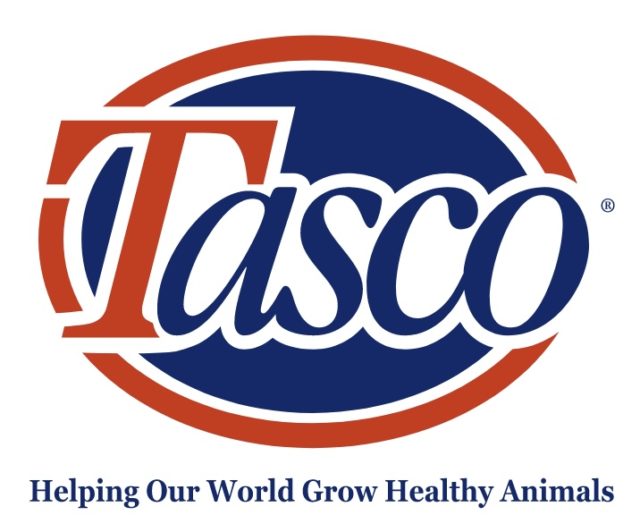“Effects of restricted dietary phosphorus supply during the dry period on productivity and metabolism in dairy cows.” Journal of Dairy Science Vol. 105 No. 5, 2022. This article, from German researchers, investigated levels of phosphorus in dry cow diets.
The authors indicate that phosphorus in bovine nutrition is under ongoing scrutiny because of concerns with excessive amounts of phosphorus excreted in manure contributing to environmental pollution. However, they say, feeding rations with excessive phosphorus content remains common practice, particularly during the transition period, as limited phosphorus supply in late gestation and early lactation is thought to present a risk for health and productivity of high-producing cows. The objectives of this study were to investigate the effect of restricted phosphorus supply during the last four weeks of pregnancy on calcium and phosphorus homeostasis during the transition period in high-yielding dairy cows, and to identify possible effects on metabolism and productivity throughout the following lactation. To do this, the authors used 30 late pregnant multiparous dairy cows. They were assigned to either a dry cow diet with low (LP) or adequate P (AP) content [0.16 and 0.3% phosphorus in dry matter (DM), respectively] to be fed in the four weeks before calving. After calving, all cows received the same ration with adequate phosphorus content (0.46% phosphorus in DM).
They authors provide some background about the opportunity of this study, saying that phosphorus in ruminant nutrition has received increased attention due to environmental concerns about excessive amounts of this mineral contained in manure. They say that many countries are currently implementing regulations aiming at reducing the amount of phosphorus applied onto farmland with manure. Regarding dairy cows, phosphorus deficiency is widely believed to be associated with several problems, and phosphorus balance disorders are considered to be of particular concern during the transition period. Because of this, feeding rations in excess of current recommendations to dry and fresh cows is still common in the dairy industry. However, little evidence supports concerns about abiding by currently recommended dietary phosphorus content for dry cow rations. As such, the objectives of this study were to explore the possible long-lasting effects of phosphorus deprivation during the dry period on dry matter intake (DMI), milk production and metabolism in the following lactation.
On the other hand, recent studies investigating the effects of phosphorus deprivation in transition cows found that feeding diets with phosphorus contents well below current recommendations from the last four weeks of the dry period and for the first four weeks of gestation indeed had negative effects on DMI, health and productivity. However, restricted phosphorus supply during the dry period was found to stimulate bone mobilization, resulting in an important and metabolically relevant release of calcium and phosphorus from bone during the last days of gestation. This was associated with more stable blood calcium concentrations in periparturient cows and decreased incidence of clinical and subclinical hypocalcaemia. Due to this, the authors hypothesized that limiting the period of restricted phosphorus supply to the last four weeks of the dry period would result in the beneficial effect on calcium homeostasis without impairing liver function and metabolism in high-yielding dairy cows.
The results reported in the study indicate that restricted dietary phosphorus supply during the dry period positively affected the calcium homeostasis of periparturient dairy cows but did not reveal negative effects on DMI, milk production or metabolic activity in the following lactation. Restriction of phosphorus during the dry period was associated with hypophosphatemia antepartum but neither exacerbated post-parturient hypophosphatemia, which is commonly observed in fresh cows, nor was associated with any clinical or subclinical indication of phosphorus deficiency in early lactation. The authors finalize indicating that although comparison of disease incidence did not yield any indication of a negative effect of phosphorus deprivation on health, these results should be confirmed in a larger-scale study.
“Invited review: Lethal heat stress: The putative pathophysiology of a deadly disorder in dairy cattle.” Journal of Dairy Science Vol. 105 No. 5, 2022. This is a review of a common problem dairies face during summer in many areas of the world. The review was done by researchers from Iowa State University and nutritional consultants from an American company, Dairy-Tech Group. The authors indicate that heat stress reduces production and efficiency in almost every metric of the dairy operation, and it thus compromises profitability and sustainability. If the magnitude of heat stress progresses, it can become lethal. Death can occur acutely or days following the heat load, even if environmental conditions have become non-stressful. Consequently, lethal heat stress is often difficult to identify and almost always misdiagnosed. The authors say that although the mechanisms of lethal heat stress are not well understood, the pathophysiology of lethal heat stress seems to be common to several species.
Heat stress is a well-known problem with dairy cows, and people involved with the industry are aware of the problems it causes, namely reduced DMI, decreased milk and component yield, and compromised reproduction. These outcomes incentivize producers to invest in heat abatement strategies (like shades, fans, sprinklers, etc.). Still, the authors say, it is surprising that heat stress-induced morbidity and mortality are rarely noticed at the individual cow or herd level. They indicate as an exception the devastating heat wave from 2006 in California that caused the death of approximately 40,000 cows. They also refer that for most heat stress-induced cattle fatalities, the actual cause of death is puzzling and elusive. Failure to accurately recognize the presentation and indications of severe heat stress commonly results in a misdiagnosis, especially following acute heat stress when environmental conditions are moderate and no longer dangerous.
The authors indicate that death caused by this problem is multifactorial and likely involve dysfunction and imbalance of several interdependent systems, from electrolyte imbalances to severe immune activation-induced inflammation, multiple organ failure and circulatory failure, among others. They say that death frequently occurs days following the extreme heat event, when temperatures are seemingly no longer threatening. In such cases, they add, the fragmented and unpredictable temporal occurrence between the heat load and death often results in misdiagnosis. The designation “lethal” in the label lethal heat stress implies a pathology severe enough to be capable of causing death, although not all cases result in death. Nonetheless, even for survivors, it is a serious pathology that can cause chronic reduced organ function in dairy cows. Because of the seriousness of this problem, the authors say that there is a need for lethal heat stress deaths to be more widely recognized, and for lethal heat stress signs to be more clearly described, so a differential diagnosis in field cases can be established. The limited information specific to dairy cattle leaves understanding of the pathology largely dependent on studies in other species. Thus, there is a critical need to clarify the signs, indications and appropriate diagnostics to facilitate accurate field diagnoses of lethal heat stress.
This column brings you information regarding some of the research being done around the world and published in the Journal of Dairy Science. The objective is to bring to light areas of research that may have an immediate practical application on a dairy farm, as well as research that, even though it may not have a practical impact now, could be interesting for its future potential application. The idea is to give a brief overview of select research studies but not go into detail on each topic. Those interested in further in-depth reading can use the citations to find each study.









